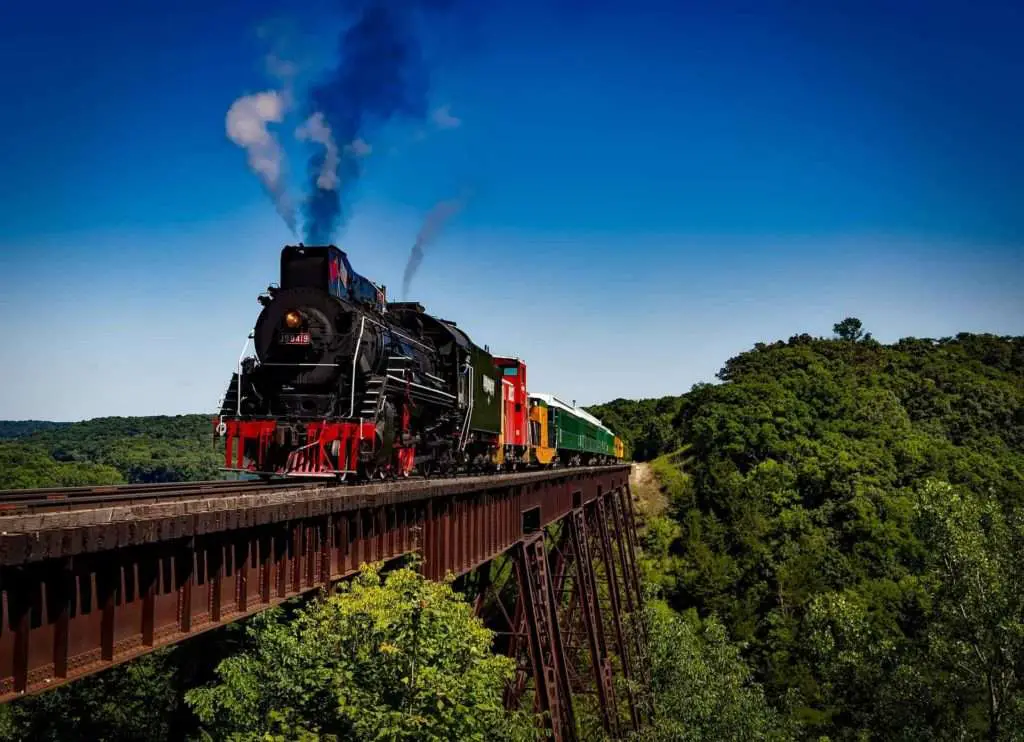
Introduction to U.S. freight railroad
Based on the U.S. Department of Transportation railroad the U.S freight rail network is the largest, safest, and most cost-efficient freight system in the world.
The U.S. freight railroad system operates on 140,000 route miles. 7 class I railroads, 22 regional, and 584 local railroads. 7 class I railroad consist of 83% of total U.S. freight railroad revenue (based on railroads.dot.gov).
9 out of 10 you will book your freight with below 7 class I railroads
- BNSF Railway Co.,
- Canadian National Railway
- Canadian Pacific
- CSX Transportation
- Kansas City Southern Railway Co.,
- Norfolk Southern
- Union Pacific Railroad Co.
What items can ship by train?
There is a big variety of items that can ship by train, including hazardous materials.
- Raw materials
- as sand, rock, minerals
- Construction materials
- as lumber, pipe, plastic, metals, paper, and cement
- Fuel
- Food and Beverages
- Machinery and households
- shoes, clothes, furniture, home appliance
- Ocean containers
Below is a video showing what can you ship by train
What items can not ship by train?
Based on UP.com there are 3 major things that can not ship by train
Personal property
Passengers
living things like pets
How much does it cost to ship cargo on a train?
The rail rate varies greatly on a number of factors, such as market condition, the lane you choose, the commodity you ship, and the volume. Volume is a vital part to decide your rail price.
The average ton-mile of rail freight is 3~5cents. One railcar can carry roughly 64 tons of freight, so the cost of one railcar travel one mile is approximately $3.2
Per Ton-Mile
The average price is 3~5 cents to ship per ton per mile on U.S. class I rail road
Per railcar
Ship one rail car one mile is approximately $3.2. if the average length of haul is 900 miles, then one railcar of freight cost the shipper about $2880 ($3.2*900)
When will you consider the railroad?
Your freight will travel over 500 miles
Your freight is bulk and has a large volume
You have regular movement in the same lane
You are close to the ramp
How do I book cargo trains?
You can book it either directly with the railroad or through a freight broker agent.
If you have a large volume you can book with any U.S. class I railroad directly, Union Pacific, CSX, and BNSF are all good choices.
If you only have a few truckloads of cargo, you’d better book with a freight forwarder. One railcar equals 4 truckloads of cargo. a freight forwarder can combine small volume cargoes which go to the same place.
It is not recommended to ship by rail for LCL (less than container load) cargo, you have to have at least one full 53 feet truckload cargo to book on a freight train
How long take it to ship by train?
The average transit time from coast to coast, such as from California to new york is roughly 7 to 10 days.
The average transit time from California to Texas is 3 to 5 days.
The transit time is the pure transit time for trains. This transit time does not include the time you send your cargo to the ramp or you pick up your cargo from the ramp and deliver it to the final destination.
here is a good article to explain freight trains in detail
What are the advantages of rail transport?
- You can ship almost anything
- There is a big variety of items that can ship by train.
- Cost efficiency
- Rail is much cheaper compared to truck
- Fuel efficiency
- Based on aar.org that American freight rail can move one ton of freight about 500 miles per gallon of fuel.
- Environment friendly
- Shipping by rail helps reduce greenhouse gas emissions
- Based on the association of American railroads that freight rail accounts for only 2.1% of all transportation-related greenhouse gas emissions. while Cars, motorcycles, and trucking account for 83.3%.
What are the disadvantages of rail transport?
- Long transit time
- The average freight train’s speed is between 25~50mph
- The average truck’s speed is between 55~85mph
- Shipping by train takes approximately 2 times time than a truck
- Rail transport does not take LCL or small-volume cargo
- You need to ship at least a full 53 feet truckload of cargo
- Inconvenient ramp location
- It is better if you are close to the ramp
- If you are further to ramp locations, the truck cost on picking up and delivery will raise your total cost and diminish the advantage of the freight train’s cost efficiency.
Below is a good video on freight rail
You might also like the below articles
Freight Train: 12 Things You Should Know
How Long Is Truck Freight shipping?
9 Things You Should Know About Bullet Train
Resources
https://www.up.com/customers/track-record/tr113018-rail-FAQs.htm
